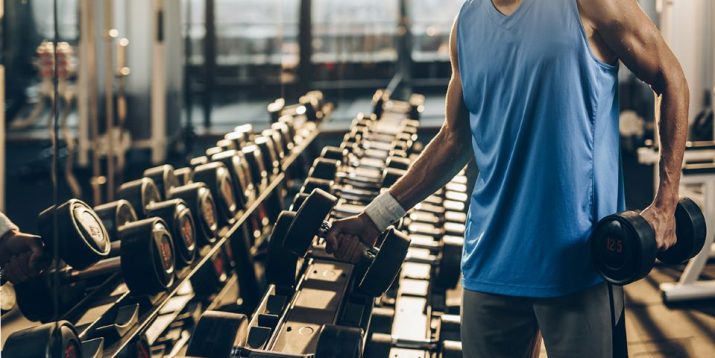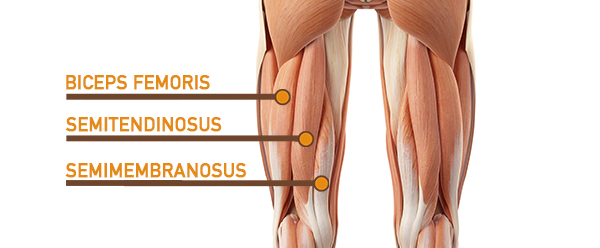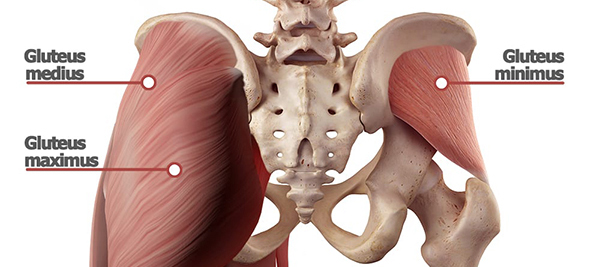How to Do the Dumbbell Skier Swing for Harder Hams and Glutes

If you want to boost total-body power, strengthen your backside, or combine cardio with weights, the dumbbell skier swing belongs in your fitness toolbox.
Recruiting your body’s fast-twitch muscle fibers, the dumbbell skier swing is an awesome way to train the almighty hip hinge, one of the body’s most important movement patterns, says Erica Suter, C.S.C.S., a Baltimore-based strength and conditioning specialist.
As opposed to bending the spine during forward folds, the hip hinge emphasizes hip flexion and shifts resistance from the smaller muscles of the back to the stronger muscles of the legs, hips, and glutes.
Over time, adopting this movement pattern can spare your back acute and repetitive-stress pain and/or injury.
Depending on your goals, Suter recommends performing the dumbbell skier swing at the beginning of your workout or saving it as a metabolic finisher.
“It expends a ton of energy, so you’ll often want to perform it immediately after a good warm-up, when you’re fresh and form won’t falter” she says. “Or, you can also perform it at the end of a workout when you’re fatigued and want to use it as a conditioning tool to see what you’re made of.”
Dumbbell Skier Swing: Step-by-Step Instructions
Depending on your goals, Suter recommends performing the dumbbell skier swing at the beginning of your workout or saving it as a metabolic finisher.
“It expends a ton of energy, so you’ll often want to perform it immediately after a good warm-up, when you’re fresh and form won’t falter” she says. “Or, you can also perform it at the end of a workout when you’re fatigued and want to use it as a conditioning tool to see what you’re made of.”
- Stand tall with your feet hip-width apart holding a pair of dumbbells at your sides, palms facing in.
- Keeping your arms straight and core engaged, push your hips back and allow your arms to swing directly backward. This is the starting position.
- Drive through your heels, thrust your hips forward, and squeeze your glutes to return to standing, swinging the weights to shoulder height. Your arms should do minimal work here; the momentum from your hips should power the dumbbells.
- Reverse the move using a controlled swing backward to return to the starting position, and move immediately into the next rep.
How to Modify the Dumbbell Skier Swing
- Up the weight: Sometimes, increasing the amount of weight used here can actually make the exercise easier by forcing you to use the correct muscles and follow perfect form. If you feel flimsy or lacking in control, increase the weights. That’ll recruit the hips and glutes and allow you to feel the movement correctly.
- Go barefoot: This can allow you to better grip and maintain contact with the floor throughout the exercise. Thicker sneakers, especially squishy running shoes, can make it harder to maintain good footing.
Dumbbell Skier Swing: Muscles Worked
Along with improving your conditioning, the dumbbell skier swing mainly strengthens the following muscles:
Hamstrings

The muscles on the backs of your thighs work eccentrically as you lower the weights, as well as help extend (straighten) your hips during the upward thrust.
Glutes

The muscles of your butt quickly contract to propel your hips forward and the weights up to your shoulders.
What about your shoulders and arms? While they are moving in the dumbbell skier swing, they shouldn’t really be “working” all that much.
Think of your arms as ropes; they’re attached to the weights, but it’s your hips that launch them.
Alternatives to the Dumbbell Skier Swing
Here are exercises similar to the dumbbell skier swing that utilize the hip hinge.
1. Dumbbell deadlift
A dumbbell skier swing without the literal swing, the dumbbell deadlift involves performing a hip hinge to lower a pair of dumbbells down your thighs, just below your knees, and then returning to standing.
2. Good morning
The good morning exercise is a simple exercise that engages your core and a handful of your body’s most powerful lower-body muscles, which comprise the posterior chain.
The move also targets your erector spinae, which can help reduce your risk of developing back pain.
3. Single-leg deadlift
Another great hip-hinge variation, the single-leg deadlift loads one leg at a time, allowing you to improve gluteus medius strength, hip stability, and single-leg balance with each rep.
